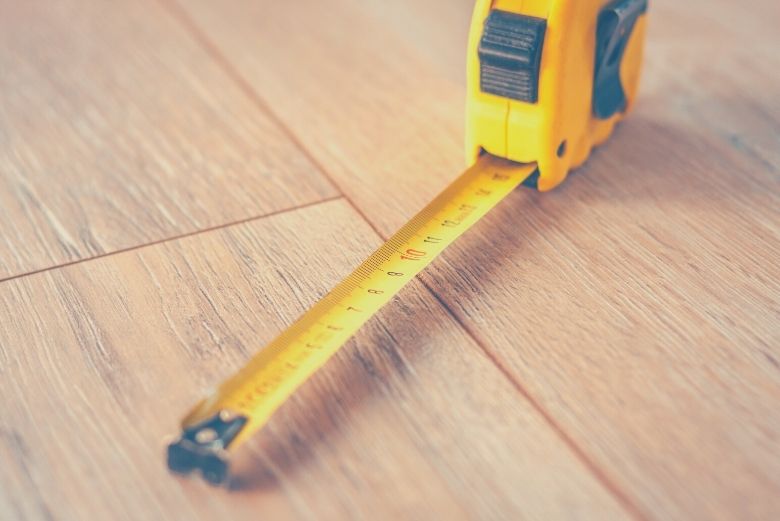Many say that carpenters use the tape measure more than any other tool. It’s a useful tool that has many applications and uses for almost any project. It’s small, easy to use, quick, and flexible. You can purchase them to measure distances from just a few feet up to hundreds of feet. Some tape measures are more portable so you can keep on yourself throughout the day while others are larger and meant to be stored for when needed.
What you can expect to read:
What to Look for
When selecting a tape measure, first determine the application and where you’ll be using it. Will you be doing carpentry work in the basement? Hanging pictures on a wall? Measuring for a concrete footing? Mentally list all of the applications you could potentially need a tape for.
Type of Housing
Will you be using it indoors or outdoors? If you use a metal spring return outdoors, it can easily become compromised with dirt, water, rust, and you’ll be forced to buy a newer one quicker than you planned. In that case, choose an open chassis or housing made for outdoor use. You can easily remove dirt and debris before rolling it back up compared to the closed housing.
Closed housing tapes are better for indoor work where you’ll be away from dirt and water that could damage your tape. One benefit to closed housings is they typically retract with a spring vs. a hand crank on an open housing tape for outdoors. Manufacturers will add rubber hand grips, belt clips, and the housing will generally protect the tape for longer life.
Will you be using it around for home improvement around electrical wires? In that use case it would be safer to buy a tape measure with a fiber glass tape instead of a metal tape. The metal option can be susceptible to accidentally shorting out any electrical circuits because they conduct electricity. The metal tapes will last much longer than the fiberglass tapes and they sometimes have coatings for greater durability. Be careful not to overextend a fiberglass tape because they can stretch.
Types of Tape Measure Ends
Will you be measuring 2×4’s for carpentry? Metallic conduit? A variety of use cases? You’ll find different types of ends with each one providing pluses and minuses depending on your use case. The most common type of end is the hook which easily hangs on to a board or even a nail for carpentry work. Another type is the ring which is best for attaching to nails, poles, or any long object. Some tapes even have magnets on the end to attach to metal objects which can be useful in certain environments.
One point to note is that the width of the hook can make an impact on your measurement increasing just a bit. Manufacturers have compensated by allowing just enough play so that the head moves back and forth it’s own width.
Types of Tape Measures
Spring Return
When you pull the tape measure out you’ll feel a spring that wants to return the tape back to rest. These tapes are usually smaller and can be put in a pocket and typically extend up to 25 feet. The wider the tape, the further you can extend it in the air without it bending and falling to the floor. You can find tapes up to 1″ in width, but the trade-off is they are larger, heavier, and take up more space.
Most spring return tape measures have a metal tip on the end which will move back and forth the width of the tip depending if you’re measuring inside or outside an object. Some manufacturers are even adding magnets to hold in place on a metal object. Spring tape measures will be in either imperial or metric and will show typical stud measurements 16″ on center.
Surveyor’s Tape
Surveyor’s tapes are up to 100 feet in length and are not spring loaded. They have a crank or handle so you have to wind them back up when you’re finished. The tape can be metal but it’s usually a fabric type of material. Wind up tapes are used for longer distances in applications of building measurements for example.
Carpenter’s Folding Ruler
These rulers are a very old and traditional way to make measurements. If you find an old-timer and ask him if he has a folding ruler, he may even have a few of them. Today, manufacturers make these folding rulers in either wood or plastic material. The folding style makes them easy to extend and take up less space when not in use.
Yard Stick
Most will remember the wood yard stick from childhood classrooms as teachers used them to point to chalkboards. This was an often used, essential measuring tool for classrooms and workshops.
Ruler
How many also remember this from school days as a child? This measuring tool is best used to make drawings on paper, read small measurements on drawings, and make straight lines. You’ll typically find measurements both in imperial and metric. Most lengths are usually 6, 8, and 12 inches.
In Conclusion
You are going to need a good quality tape measure for 99% of all home construction or DIY projects. With the information we’ve reviewed, you’ll now be able to make an informed decision when choosing the right type of tape measure for the job!








